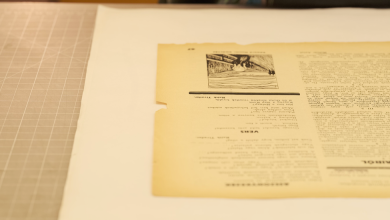What Does It Mean to Be a ‘High-Risk Homosexual’?

HIGH-RISK HOMOSEXUAL
A Memoir
By Edgar Gomez
The concept of Latinidad, or “Latinness,” is an unstable one. Meant to encompass a multitude of cultures, languages and experiences, it inevitably falls short, as words often do. Although contested, the term at least attempts to put a name to a hazy collection of norms and realities, the pretty and the ugly that together constitute a certain idea of self. It’s largely the ugly that “High-Risk Homosexual” is concerned with, and though often heavy, Edgar Gomez’s debut is also a breath of fresh air.
The memoir recounts Gomez’s life growing up queer in the literal arena of compulsory masculinity: The opening chapter takes place in his uncle’s cockfighting ring in Nicaragua. Scenes of the birds sparring, their beaks and talons affixed with blades, are interspersed with those of a 13-year-old Gomez in an Orlando nightclub. In this other, no less lethal kind of arena, his uncle pushes him toward sex with a girl, the man’s former housekeeper. It’s a compelling portrait of machismo: a surveilled, violent dance.
Gomez is something of an alien to these rites, an unwilling participant in the mandatory spectacle of being a man. As a writer, he invites us into the chasm between what he is expected to do and what he is capable of, giving himself plenty of room for emotion, self-deprecation and acerbic observation on the “machistas,” or sexists, who proliferate in Latin culture.
This is as true in the early chapters, which see a young Gomez under the thumb of various authority figures like his uncle and his mother, as it is in the second half of the book, after he’s out of the closet. The banner chapter, in which his doctor labels him a “high-risk homosexual” and puts him on PrEP, finds Gomez caught in a similar bramble. “I didn’t particularly feel high-risk, but given the history of H.I.V. among queers and the disproportionate rates that it affected Latinx people, I couldn’t exactly say I wasn’t,” Gomez writes. “I was stuck.”
This time, he turns to the authority of wise elder queers he’s encountered in art and the media, who lived through the peak of the AIDS crisis in the United States. “Be careful, they said. Sex can kill you. Look what it did to us.” Ultimately these elders assume a mirror role to his uncle’s: people who have Gomez’s best interests at heart, but whose expectations he can’t meet.
And like his uncle, this older generation poses the question that runs through the heart of the book: What happens after you’ve tried and failed to be the right kind of man? Or in this case, the right kind of gay man? Can you ever be an authority figure in your own right?
Gomez writes with a humor and clarity that generally keep the melodrama at bay, an absolute must in a memoir that might otherwise have been a laundry list of painful experiences. In a relatable scene that will likely make queer readers squirm, the author recalls a consultation with his doctor in which she asks, “‘Do you prefer to give or receive?’ … as if the question weren’t about anal but my philosophy on Christmas.”
Ever committed to parsing its central themes of masculinity and queer identity, “High-Risk Homosexual” does circle back on itself a bit, the chapters teetering on uniformity. Gomez’s voice is equal parts warmth and acid wit, like a good friend you’re slightly afraid of, but there are times in the middle of a passage where you’ll feel you know what he’s going to say before he says it.
These minor complaints do little to dull the shine of an exciting debut from an author with a rare point of view. “High-Risk Homosexual” deals with some titanic questions. What is Latinidad? What is machismo? What does it mean to be a man, never mind a queer man? By its own admission, the book doesn’t have all the answers, but it makes a compelling case that they will come from the razor-sharp queers living in the margins.




